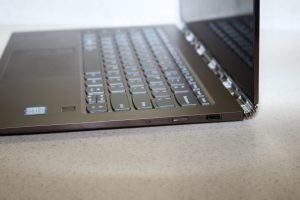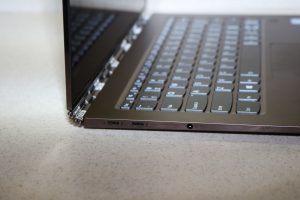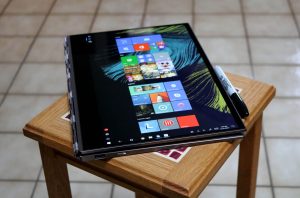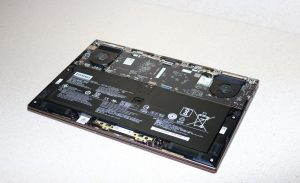Lenovo Yoga 920 2-in-1 Laptop Review
Lenovo Yoga 920 2-in-1 Laptop Reviews
Hey! Here Comes another Exclusive Lenovo Yoga 920 2-in-1 Laptop Reviews and Specifications that you need to know… Since we all know that Choosing the right laptop for your needs can be a daunting task. There are hundreds of models to choose from ranging from powerful and not very portable gaming laptops, all the way down to ultraportable mobile workstations, and everything else in between. Today we’re taking a look at Lenovo’s new Yoga 920 2-in-1 laptop.
READ ALSO >>> All windows serial keys
SPECIFICATIONS AND REVIEWS OF LEVONO YOGA 920 LAPTOP
With a 14″ foldable display, an 8th-gen Intel Core i7 processor, and a premium-looking design, the 920 is aimed at business professionals and mobile users who want a sleek laptop that can always keep up with them. As a direct upgrade to the Yoga 910, the Yoga 920 adds Thunderbolt 3, an improved touchpad and active pen, longer battery life, and better thermal management.
The laptop features an all-metal, unibody design. It’s smooth and simple with straight lines and gently rounded edges. At about 3 pounds, it’s marginally heavier than some other models in this range but can still be easily carried around all day without too much effort. The professional industrial design makes it perfect for use in the board room, too.

The model we received for review features a bronze coloring, but the Yoga 920 is also available in a platinum silver finish.
I can tell some considerable design work went into the keyboard. The full metal design helps the 920 keep its rigidity and not flex while typing. Considering the thickness of the laptop, the keys aren’t terrible but they do have a shallow travel distance. Some may find them a bit too mushy, but overall I think Lenovo did a good job here.

Despite the ultra short travel distance, the Yoga is able to offer a good typing experience. Looking at the keyboard layout, there aren’t many sins to take off points for. You get full-sized enter and backspace keys, a function key, and right alt and control keys as well. The up and down arrow keys are condensed but I’m indifferent about this. One possible solution could be to shorten the right shift key to make room for full-sized up and down arrow keys. Another small inconvenience is that page up and down don’t have their own dedicated keys but print screen and insert do. I think a far better implementation would have page up and down mapped at the top to their own keys and then print screen and insert mapped as secondary functions.

The trackpad is also very nice. Too often laptop manufacturers make the trackpads needlessly small, but that is not the case here. The trackpad has good palm and thumb rejection if you rest it on the left click. Multi-finger gestures are smooth and natural feeling as well. While it’s not quite at MacBook level, it’s about as good as you can get. The front fingerprint sensor is a nice touch, too.
With Windows Hello, it’s not quite as fast as a modern smartphone sensor, but it still gets the job done. I found I was using this more than I was typing my password to log in. The Yoga 920 also has far-field microphones with a 20 foot range for those avid Cortana users.
There isn’t much room for I/O on a laptop of this class but I think Lenovo did a good job with it. The left side has dual USB-C Thunderbolt ports and a headphone/mic combo jack. Unfortunately the included USB-C charger only works on one of the ports. The right side has the power button and a full sized USB 3 Type A port with always-on charging. They may have been able to fit an extra USB port or possibly even an HDMI port, but overall it’s good port selection.
Moving on to one of the Yoga 920’s best features: the hinge. At first glance, it reminded me of the mechanics found in a premium metal watchband. The motion is extremely fluid and the mechanism allows the laptop to be folded full 360 degrees around to the back. The power and data for the screen travel through a small ribbon cable concealed in the center of the hinge. Folding it back and forth from tablet to laptop mode is very satisfying. I did find that opening the lid from a closed position required a little more force than it should have. This reflects a slight over-tensioning in the hinge but it’s nothing you can’t get used to.
The display on the 920 is solid as well. While it’s not designed for color-accurate work, viewing angles are great. The screen gets very bright but I found the lower levels of brightness to be inadequate. There are about 10 levels of brightness and I typically stayed around the middle. The lowest level is completely off but the next 3 levels appear nearly identical to each other. There is no good setting for use in a dark room or when you don’t want someone looking over your shoulder. It’s hard to tell if this is an issue with Windows or Lenovo’s screen but either way, there is definitely some room for improvement.

The Yoga 920 is also available with a 4K screen but I am plenty happy with the 1080p model. On a 14″ screen, I feel the difference is negligible and not worth the extra price and battery drain for most. Unless your applications require the higher resolution, the 1080p variant should be just fine. Both models are touchscreens, so that isn’t a factor.
Once folded into tablet mode, the Yoga 920 is only a hair thicker than a marker. Holding it from the back where the keys are can be a little uncomfortable but they automatically disable so you don’t have to worry about pressing them.
When you are in tablet mode, you’ll find the included active pen very useful. It takes a single AAAA battery and makes the input experience much nicer. There are two thumb buttons as well as a button on the top of the pen where an eraser would be. The only problem with this pen is finding a place to store it when you aren’t using it.
Lenovo does include a small plastic mount that fits in the USB 3 Type A port, but this means you can’t use that port at all then which may be an issue depending on your peripherals.
Opening up the laptop is fairly straightforward with a standard set of precision Torx bits. The bottom is a single piece of metal and helps act as a heatsink to keep the laptop cool. Once inside, you’ll notice the monster 70 Watt battery. It takes up about 2/3 of the space inside the casing. On either side of the battery we find the two down-firing speakers. For a laptop this size, they stay clear and get surprisingly loud. While they’re not perfect, they are definitely some of the best laptop speakers I’ve ever heard.

Under full load, the bottom of the laptop got warm to the touch but the keyboard and touchpad stayed relatively cool. This is in part due to the all-metal construction that helps move the heat out of the laptop and away from your hands. There are two small exhaust fans at the top which blow out directly behind the laptop through the hinge. This means that even when the 920 is folded or resting on a flat surface, the heat can still get out.

During load tests, the Yoga maintained a stable average temperature of 72 degrees across all cores. There were some jumps up to 85-90 degrees at first but the i7-8550U quickly throttled down to 1.9GHz.
Besides the trackpad circuitry, there’s not much under the battery either. The only easily accessible component is the wireless adapter; something a user would rarely even bother changing. If you want to get at the M.2 drive, you’ll have to completely disassemble the laptop because it’s located beneath the motherboard. The RAM is also soldered in so you may want to be generous and think towards the future when selecting your configuration.

Discover more from Applygist Tech News
Subscribe to get the latest posts sent to your email.
